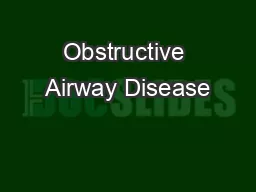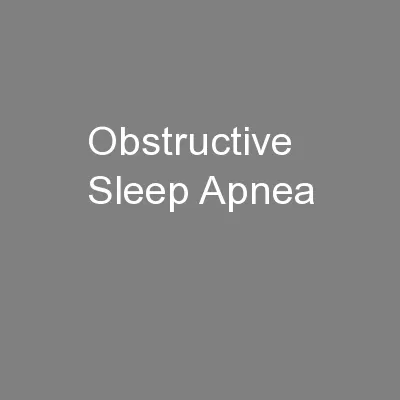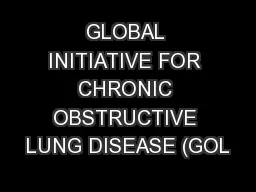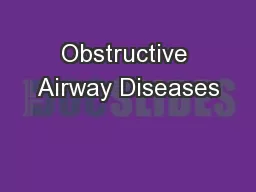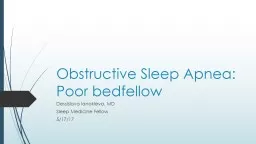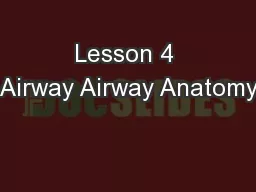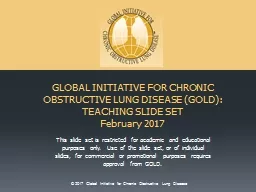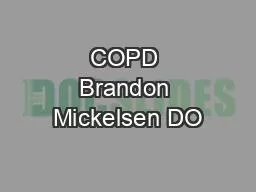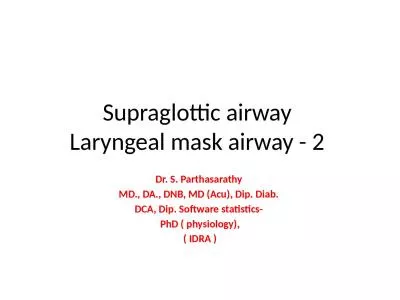PPT-Obstructive Airway Disease
Author : trish-goza | Published Date : 2016-03-01
Asthma amp COPD Rachel Ventre FY1 Spirometry PFT Obstructive FEV1FVC ratio Asthma COPD Bronchiectasis CF Restrictive FVC amp FEV1 Normal or ratio KyphosisScoliosis
Presentation Embed Code
Download Presentation
Download Presentation The PPT/PDF document "Obstructive Airway Disease" is the property of its rightful owner. Permission is granted to download and print the materials on this website for personal, non-commercial use only, and to display it on your personal computer provided you do not modify the materials and that you retain all copyright notices contained in the materials. By downloading content from our website, you accept the terms of this agreement.
Obstructive Airway Disease: Transcript
Download Rules Of Document
"Obstructive Airway Disease"The content belongs to its owner. You may download and print it for personal use, without modification, and keep all copyright notices. By downloading, you agree to these terms.
Related Documents

